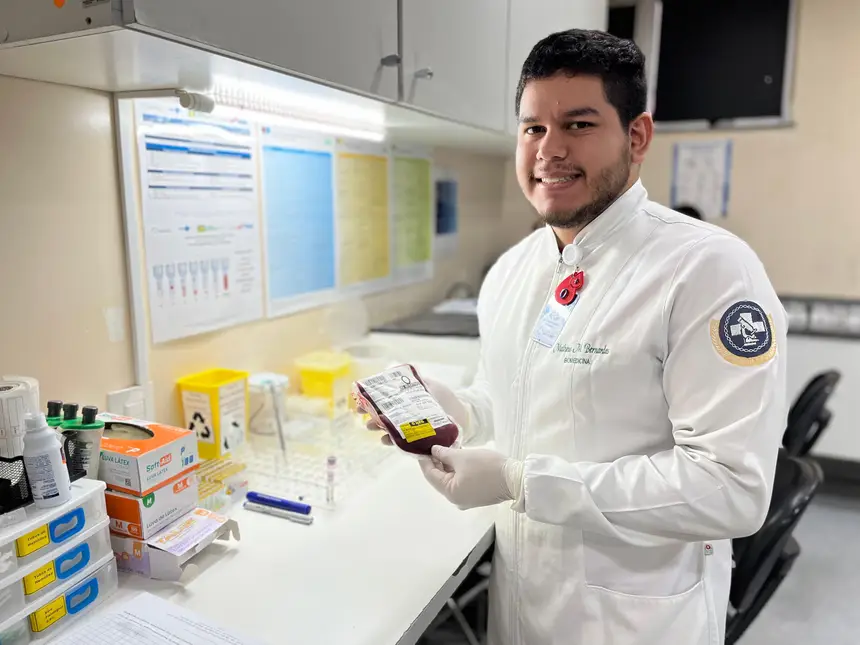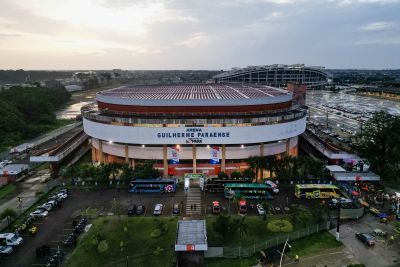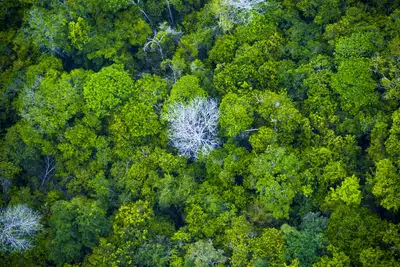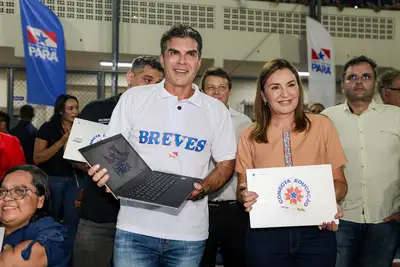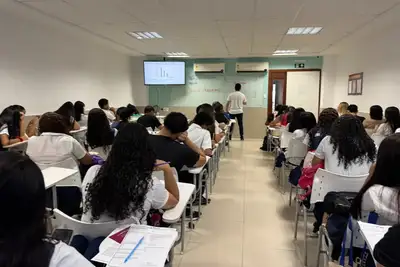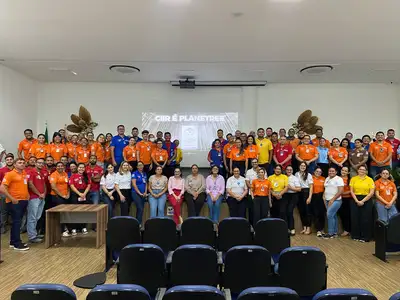Transfusions are vital for children and adolescents undergoing cancer treatment
Octávio Lobo Children's Oncology Hospital (Hoiol) highlights the importance of permanent blood donation as an act of solidarity and love for others
In the silent corridors of the Octávio Lobo Children's Oncology Hospital (Hoiol) in Belém, where childhood coexists with syringes, medications, and complex diagnoses, blood donation, besides being a gesture of solidarity and citizenship, is a fundamental therapeutic resource. For children and adolescents undergoing cancer treatment, especially those diagnosed with leukemias, transfusions are often the only way to continue chemotherapy and face the side effects that threaten their very survival.
About 300 transfusions are performed each month at the High Complexity Oncology Unit (Unacon). Most are intended for patients facing one of the cruelest effects of the disease and treatment: the reduction of blood cells. In these cases, the body fails to produce red blood cells, white blood cells, and platelets adequately, that is, essential cells for oxygen transport, defense against infections, and coagulation.
“In leukemias, there is an abnormal proliferation of malignant cells, the so-called blasts, which occupy the space in the marrow and inhibit the production of good cells,” explained the hematologist and technical manager of the institution's Transfusion Agency, Iê Fernandez. “Chemotherapy comes into play as a poison to destroy these sick cells, but it also affects healthy cells. The patient has an even greater reduction of blood cells. Therefore, transfusions are indispensable for the treatment to continue.”
Each donation can generate up to four distinct blood components: red blood cell concentrate, platelets, plasma, and cryoprecipitate. All may be needed at some point during treatment. The most common transfusions are of red blood cells to combat anemia and platelets, essential in surgical procedures and in controlling bleeding.
But maintaining the stocks is far from simple. Although blood has no substitute and cannot be manufactured, the culture of voluntary donation is still not rooted in Brazilian society. “It’s easier to donate money than blood,” the hematologist laments. “Blood cannot be bought, it’s not on the shelf. It depends exclusively on the willingness of the person to make the donation,” she emphasized.
The absence of regular donors creates a logistical and emotional challenge. There are even children who, aware of the urgency, turn to social media to ask for help. With a fragile voice but rare determination, they touch where no technical argument reaches. “It’s moving to see a child asking for donations to survive. When she speaks, it’s impossible not to listen. It’s her life at stake,” said Iê Fernandez.
The need for awareness is continuous. It is estimated that if only 3 to 5% of the population donated regularly, there would be no shortage. However, the Brazilian rate hovers around 1.8%. Another crucial point, besides donation, is the rational use of blood. As highlighted by the coordinator of the Transfusion Agency at Hoiol, blood components are only used in situations of real need, after careful evaluation. “It’s not enough to have blood available; it must be used responsibly. It’s too precious a resource to be wasted,” reinforces the specialist.
The collection in the state is centralized at the Hemopa Foundation (blood center of Pará), which adopts strict protocols for screening, quality control, and safety. In the end, the equation is simple but loaded with impact: one donation can save up to four lives. For a child with cancer, this can mean the chance to play again, return to school, or simply continue. Because while for many donating blood is a choice; for them, it is synonymous with hope.
Among the most emotional stories experienced in the hospital, there is one that remains alive in the memory of the biomedical professional at the transfusion agency, Matheus Bernardes. A boy with a devastating diagnosis: acute leukemia. The disease was advancing rapidly, and the child's body could no longer react on its own. He needed urgent transfusions, one after another and constant. But there was a huge obstacle, the blood type was O negative, extremely rare.
According to the biomedical professional, every minute counted. The scarcity of the blood component put the team in a race against time. “We lived days of anguish, searching for donors, contacting blood banks in other regions, facing distances, bureaucracies, and the fear of not making it in time. But we did it. One by one, the blood components started arriving. Each bag was received with relief, as if it were a letter of life. And that boy, so fragile yet so strong, kept resisting. With each transfusion, his eyes began to shine again. With each gesture from the team, he showed us that he wanted to live,”.
“And he lived, overcame the worst phase. Seeing his recovery was like witnessing a miracle built by many hands. By science, by solidarity, and by the silent courage that only a child facing acute leukemia can have. Stories like this remind us that transfused blood carries more than cells: it carries hope. And shows us, every day, that donating blood is giving someone the chance to continue living,” said Matheus.
Public servant Wanna Celli, 35 years old, knows well the importance of each collected bag. She is the mother of Maria Beatriz, who is only 1 year and 1 month old. The baby was diagnosed with Acute Myeloid Leukemia (AML) last May. The discovery occurred after routine exams. “The blood test detected low platelets, anemia, and hemoglobin at worrying levels. She also had purple spots all over her body and swelling in her feet. The laboratory itself called us, showing concern for her health status,” said Wanna.
From there, the family sought immediate care at a private hospital in Belém, where Maria was admitted to the Intensive Care Unit for a week. “It was there that we performed the bone marrow test and received confirmation of the AML diagnosis. Soon after, we were referred to the Octávio Lobo Children's Oncology Hospital, a reference in the treatment of childhood cancer in the region,” said the child's mother.
The family, who is from Bragança, has been in the capital of Pará since the diagnosis. The baby has already completed the first cycle of chemotherapy lasting seven days and is now in the recovery phase. Since her hospitalization, Maria has received four platelet transfusions and about seven to eight bags of blood. The constant need for blood components mobilized the family to start a donation campaign. “We started the campaigns immediately and received massive support from the Bragantina population. People we didn’t even know made a point of donating and sending the receipts. Friends, family, and even strangers united for her,” said Wanna.
Wanna emphasized the importance of the gesture. “Here at the hospital, we fight for our daughter, but also for other children. I met many other Marias and other Anas here. I always ask that they donate not just for Maria, but for all. It’s a gesture of love, of solidarity. It’s simple and saves lives,” she concluded.
Service:
Anyone wishing to donate blood for Hoiol patients can simply go to any Hemopa collection unit and inform the code: 1766. Blood donation is a quick and safe process. To donate, it is necessary to be between 16 and 69 years old, weigh more than 50 kg, be in good health, and well-fed. It is mandatory to present an official photo ID, and in the case of minors under 18, they must be accompanied by a legal guardian. More information can be obtained at Hemopa service units or through the Foundation's official channels.
Accredited as a High Complexity Oncology Unit (Unacon), Hoiol is a reference in the Amazon region for the specialized diagnosis and treatment of childhood cancer in the age group between 0 and 19 years. Currently, the unit serves more than 900 patients from 144 municipalities in Pará and neighboring states.


